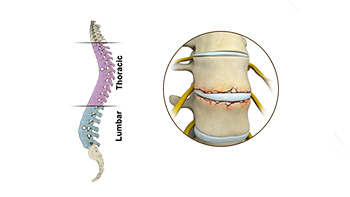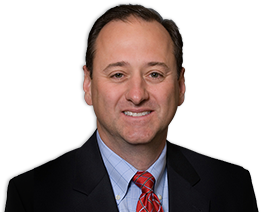Fracture of the Thoracic and Lumbar Spine

The backbone is made of small bones arranged from the neck region down to the buttocks, one above the other. The region at the chest and lower back are called the thoracic and lumbar spine, respectively. These are the two regions commonly affected by a fracture and frequently occur due to high-velocity accidents, falls from a height or a violent blow. They may also occur in cases of osteoporosis or a tumor where the bone is weakened.
A thoracic or lumbar fracture is associated with moderate to severe back pain. Fractures of the vertebral column may be associated with injury to the underlying spinal cord, causing pain, tingling sensation, numbness, weakness, and bowel and bladder dysfunction.
Injury to the thoracic and lumbar spine may be assessed by a physical examination, neurological tests, and imaging studies that help identify the nature and extent of the fracture.
Thoracic and lumbar spine fractures are usually treated with bracing for 6 to 12 weeks with a gradual increase in activity. Surgery is performed in cases of displacement of fractures, and significant injury to the adjoining ligaments, intervertebral discs or nerves. Your doctor makes an incision in your front, side or back, realigns your bones with screws, rods or cages, and releases the compressed spinal cord or nerves. This is followed by stabilization of the fracture. Surgery is followed by rehabilitation to alleviate pain and regain mobility.











